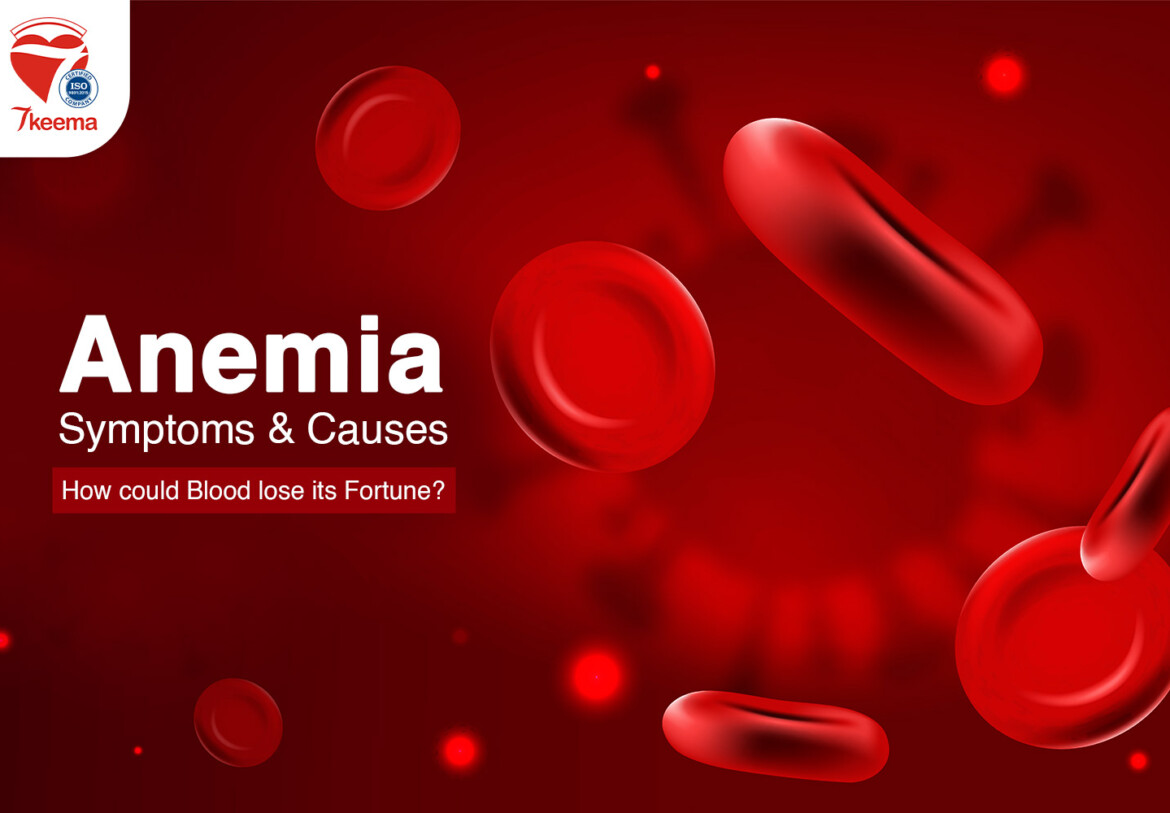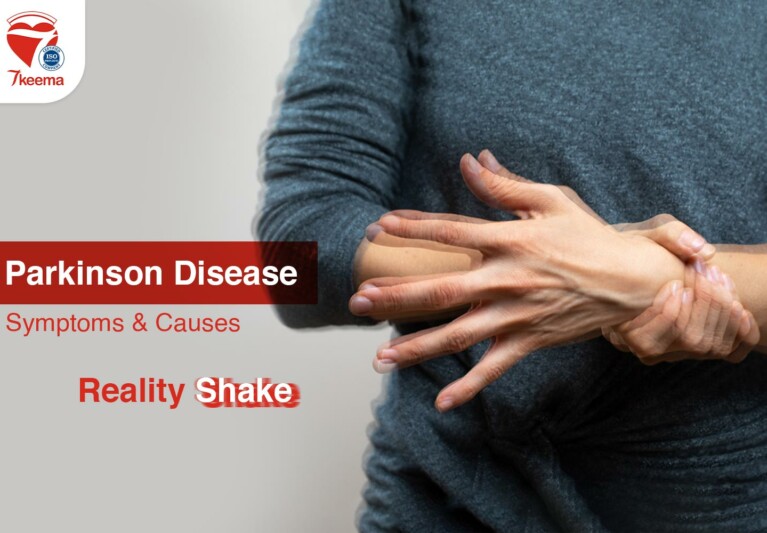Many people would suffer from anemia symptoms for various reasons; it would affect their health in general and prevent them from having a normal life in so many ways. Blood has a fortune full of cells meant to transport oxygen to the whole body organs, and the issue occurs when these cells decrease for whatever reason.
Blood cells are divided into three different types:
– White blood cells: the main ones responsible for fighting against any infection.
– Platelets: these cells are responsible for clotting blood in case of bleeding.
– Red blood cells: these cells transport oxygen from the lungs to the whole body.
On the other side, we have three main measurements that indicate the blood cells healthy amount:
1- Hemoglobin: the main oxygen carrier through the blood cells.
2- Hematocrit, which indicates the sedimentation rate, also gives an index about the ratio of red blood cells to the rest of the blood cells.
3- Red blood cells count: indicating the number of red blood cells.
What is Anemia?
Any abnormality through one of these measurements would mean having an anemia problem in case of low measurements. Especially the Hemoglobin concentration in blood, which has different normal ranges according to sex, age, daily habits, and more.
For example, men are diagnosed with it when hemoglobin measurement is less than 13.5 grams per deciliter (g/dl) and when hematocrit measurement is less than 41%.
Meanwhile, for women, when hemoglobin is less than 12 grams per deciliter (g/dl), and when hematocrit measurement is less than 36%.
On the other hand, smoking would have its own impact on hemoglobin rates, as it’s known that smoking would increase it over the normal range, while athletes could have different hemoglobin measurements ranges.
Symptoms are evident and effective for patients of whatever age, so let’s discuss them in detail.
What is Anemia Symptoms?
Symptoms would vary according to age, gender, and many other factors. These symptoms could be:
– Feel exhausting and tired almost all the time.
– Weakness
– Pale skin
– Heartbeats disorder
– Breathing difficulties
– Cold limbs
– Dizziness
– Chest pain
– Headache
– Unstable focus and conscious state
Symptoms vividly affect the patient’s daily life, and losing consciousness repeatedly through their regular daily activity, leading to more critical complications.
Out of this point, it’s widely essential to understand the causes.
Anemia Causes
In general, symptoms take place when the body stops producing enough blood cells, loses blood due to bleeding, or destroys red blood cells for any reason. Causes could be due to many diseases and health conditions or due to heritage factors.
It has various types, between which we can mention sickle cell, aplastic, and hemolytic anemia.
Each type would have some causes, but in general, reasons vary between:
– Iron deficiency in the body could be one of the most prevalent causes, as the bone marrow uses this element to produce hemoglobin with enough amounts. The lack of iron is due to losing blood in general, especially during the menstrual for women, or due to stomach ulcers that occur when taking many pain killers and medicines in vast amounts without asking a doctor. Moreover, women during pregnancy are also subjected to have a lack of iron if they don’t receive healthy meals rich in nutrition elements. The iron element could be provided from green vegetables in general.
– Lack of some essential vitamins and elements, one of the leading causes is the lack of folic acid or vitamin B-12 due to unhealthy meals, which reduces the productivity of red blood cells in enough amounts. On the other side, some people could suffer from problems in vitamin B-12 absorption, which’s the main reason as well.
– Many inflammatory diseases could lead to reducing hemoglobin, between which we can mention AIDS/HIV, cancer with all its types, kidney diseases, rheumatoid arthritis, or Crohn’s disease. All these diseases have a direct effect on the red blood cells’ productivity rate.
– Any disease that infects the bone marrow, in general, is directly connected to the number of red blood cells produced. Between these diseases, we can mention blood cancer (leukemia) or myelofibrosis.
To be more specific, let’s go into different types and their causes.
How many types of Anemia?
– Aplastic Anemia:
Aplastic anemia is one of the most critical types and the most life-threatening. Due to aplastic anemia, the bone marrow becomes not able to produce enough blood cells. Up till now, we don’t have an apparent reason for why someone would have aplastic anemia, but most theories go toward immune diseases and issues. However, aplastic anemia is very rare to happen.
– What is hemolytic anemia?
Hemolytic anemia occurs when red blood cells are destroyed excessively that the bone marrow can’t replace them. Also, hemolytic anemia could also be a consequence of any blood disease. Otherwise, hemolytic anemia could be due to heritage factors.
– Sickle cell Anemia:
Usually, sickle cell anemia takes place due to heritage factors. The body produces some disordered hemoglobin cells, which ruins the red blood cells and leads to sickle cell anemia.
Aplastic, hemolytic, and sickle cell anemia are different types of the same issue for various reasons. However, many risk factors could increase the possibility of having one of those.
Risk Factors:
– Unhealthy nutrition system that doesn’t include some essential elements, such as iron, folic acid, and vitamin B-12. And it’s also a critical factor to have a chronic disease, such as diabetes, obesity, high blood pressure, and high cholesterol.
– The digestive system and intestinal disorders could possibly lead to having problems absorbing the main nutrition elements, which leads to a massive lack of essential vitamins.
– During menstrual for women, as it’s basically a bleeding process that happens during a period of time, which could lead to massive red blood cells loss at a rate that couldn’t be compensated.
– Pregnancy is the leading risk factor, and a pregnant woman must have a healthy nutrition system to guarantee a healthy baby and prevent from losing rich nutrition elements.
– Having chronic diseases might be risky as well; having diabetes, cancer, or renal failure could lead to such a case.
– Aging, in general aging, affects the cells’ renewal into our bodies. Over the age of 65, red blood cells could possibly take a hit down.
– Having someone in the family suffering from such a case could possibly be a risk factor to have hemolytic or sickle cell anemia.
– Alcohol addiction increases the risk of having aplastic, sickle cell, or hemolytic anemia.
Complications
If not treated properly, symptoms would take an extra step and cause many severe complications, which could be life-threatening.
– Feeling exhausted almost all the time and couldn’t practice simple daily activities.
– For pregnant women, pregnancy could be in danger. The baby’s health is facing the issue as much as the woman herself.
– The heart starts to pump more blood to compensate for the lack of red blood cells, leading to a massive increase in heartbeats rate, which could lead to heart hypertrophy, or even in some cases, heart failure.
– Sickle cell anemia could be dangerous and life-threatening.
Treatment & Prevention
Whether it’s aplastic, hemolytic, or sickle cell anemia, treatment should be provided to control the red blood cells amount in the bloodstream.
– Supplements and vitamins are highly recommended and should be described by a specialist doctor.
– In case of aplastic anemia, blood transfusion could take place if needed.
– If it’s due to an issue in the bone marrow, transplanting and chemotherapy should be used, respectively.
– In the case of hemolytic anemia, some medicines are described to prevent the immune system from attacking red blood cells.
– In the case of sickle cell anemia, the patient should keep monitoring oxygen levels and make sure it’s an excellent healthy level.
However, it’s always better to prevent than to treat. Therefore, some tips could be helpful to have a healthy life:
– Have healthy meals rich in vitamin B-12, folic acid, and iron.
– Healthy nutrition system for pregnant women.
– Check-up periodically, doing all needed blood tests, and scans if needed, to early detect any possible problem and provide the proper care in time.







